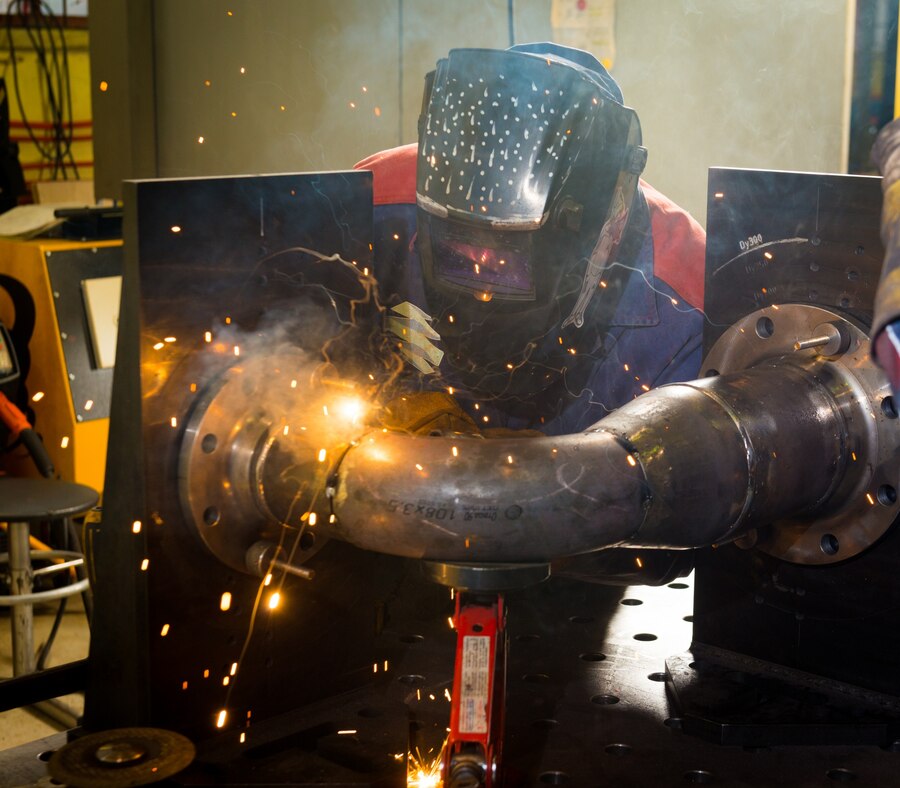The Rise of Smart Workwear with Wearable Technology: New Trends in Manufacturing
The workwear industry is rapidly transforming, and at the heart of this evolution is the integration of wearable technology. Smart workwear is no longer a futuristic concept—it’s becoming a reality that enhances safety, productivity, and comfort for workers across various industries. As companies push for smarter, more efficient solutions to protect their teams, wearable technology is opening new doors in workwear design and functionality. Let’s dive into the latest trends in smart workwear and explore how it’s changing the game.
1. Health Monitoring through Wearable Sensors
One of the most innovative advancements in smart workwear is the inclusion of wearable sensors that monitor the health and well-being of workers in real-time. These sensors can track vital signs like heart rate, body temperature, and even stress levels, alerting workers to potential health risks. For instance, in physically demanding roles such as construction or mining, wearables can detect signs of fatigue or overheating, helping to prevent heatstroke or exhaustion.
Imagine work clothing that keeps track of your health while you work—smart workwear equipped with sensors can now monitor heart rate, body temperature, and fatigue levels, helping to keep workers safe and preventing health risks in demanding environments.
2. Location Tracking for Safety and Productivity
In large worksites, especially in industries like construction, logistics, and manufacturing, ensuring the safety and efficiency of workers is paramount. Smart workwear is now incorporating location tracking technology, which uses GPS and other sensors to track workers’ positions in real time. This feature helps managers keep tabs on employee whereabouts, ensuring no one is lost or at risk in potentially dangerous areas. Furthermore, location tracking can help optimize workflows by monitoring which areas of a site need more attention or labor.
With GPS-enabled smart workwear, employers can track the location of workers in real time, ensuring safety on large, complex job sites while also improving workflow efficiency and reducing response times during emergencies.
3. Environmental Hazard Detection
In high-risk environments, such as chemical plants, oil rigs, or construction sites, exposure to hazardous materials or extreme conditions is a serious concern. Smart workwear now comes equipped with sensors capable of detecting dangerous environmental conditions, such as toxic gases, high levels of dust, or extreme temperatures. When these conditions are detected, the system can alert workers and supervisors, triggering automatic safety protocols to reduce the risk of exposure.
With environmental sensors integrated into smart workwear, workers are now alerted instantly to hazardous conditions like toxic gases or extreme temperatures, ensuring safety even in the most dangerous and unpredictable environments.
4. Exoskeleton Technology for Enhanced Mobility
Exoskeletons are a rapidly emerging trend in workwear, designed to assist workers in physically demanding tasks. These wearable suits provide extra support to help with lifting, reducing strain on the body and preventing musculoskeletal injuries. Exoskeleton technology is making its way into smart workwear, particularly in industries like manufacturing, logistics, and healthcare. These exoskeletons not only increase productivity but also decrease long-term injury risks associated with repetitive or heavy lifting.
By integrating exoskeleton technology into smart workwear, workers can now lift heavier loads with ease, reducing strain on the body and minimizing the risk of long-term injuries, all while boosting efficiency on the job.
5. Built-In Communication Systems
Communication is key, especially in high-risk environments like construction sites or emergency response scenarios. Smart workwear now features built-in communication systems that allow workers to stay in constant contact with their team or supervisors. Whether it’s two-way radios embedded into jackets or voice-activated headsets, these systems ensure that help is always just a call away, enabling workers to communicate hands-free even in noisy or hazardous environments.
In the fast-paced world of work, smart workwear with built-in communication keeps teams connected, ensuring workers can communicate seamlessly and safely, even in the most chaotic or hazardous work environments.
6. Wearable Lighting for Visibility
In industries like construction, mining, or logistics, working in low-light conditions is common, and visibility can be a safety concern. Smart workwear is now integrating wearable lighting systems, such as LED lights, into clothing and accessories. These lights are strategically placed in vests, jackets, or helmets, ensuring workers are always visible, even in the darkest or most remote environments. The best part? The lighting is often motion-sensitive, turning on automatically when the worker is moving, and turning off when stationary to conserve battery life.
With wearable lighting embedded into smart workwear, workers in low-light conditions stay visible and safe, ensuring clear visibility on the job without the hassle of carrying extra equipment.
7. Real-Time Performance Feedback
Smart workwear now offers real-time feedback on a worker’s performance, providing insights into their movement, posture, and even overall productivity. This data is sent to supervisors, allowing them to assess efficiency, identify areas for improvement, and provide targeted support. This technology is particularly useful for industries with repetitive tasks, as it can help ensure that workers maintain optimal posture and avoid fatigue or injury.
With real-time performance feedback, smart workwear helps workers and managers stay on track, offering insights into movement, posture, and productivity, all aimed at improving performance and preventing injury on the job.
8. Battery Efficiency and Charging Solutions
As wearable technology becomes more integrated into workwear, one major concern is the power required to keep all these features running. Smart workwear manufacturers are addressing this challenge by developing battery-efficient systems and innovative charging solutions, such as solar-powered jackets or energy-harvesting fabrics that charge devices on the go. These solutions ensure that workers can rely on their smart gear throughout their shift, without worrying about battery life.
With battery-efficient smart workwear, workers can rely on their wearable technology all day long, thanks to innovative solutions like solar-powered jackets and energy-harvesting fabrics that keep devices charged without the need for bulky power sources.
Conclusion: The Future of Smart Workwear with Wearable Technology
The integration of wearable technology into workwear is transforming industries by enhancing safety, productivity, and comfort. Whether it’s through health monitoring, environmental hazard detection, or exoskeletons that assist with lifting, smart workwear is not just about innovation—it’s about creating safer, more efficient work environments. As technology continues to advance, the next generation of smart workwear will offer even more personalized features to protect workers and boost their performance.
The future of workwear is here, with smart technology that not only ensures safety but also elevates comfort and efficiency, making workwear smarter and more responsive to the needs of the modern worker.






